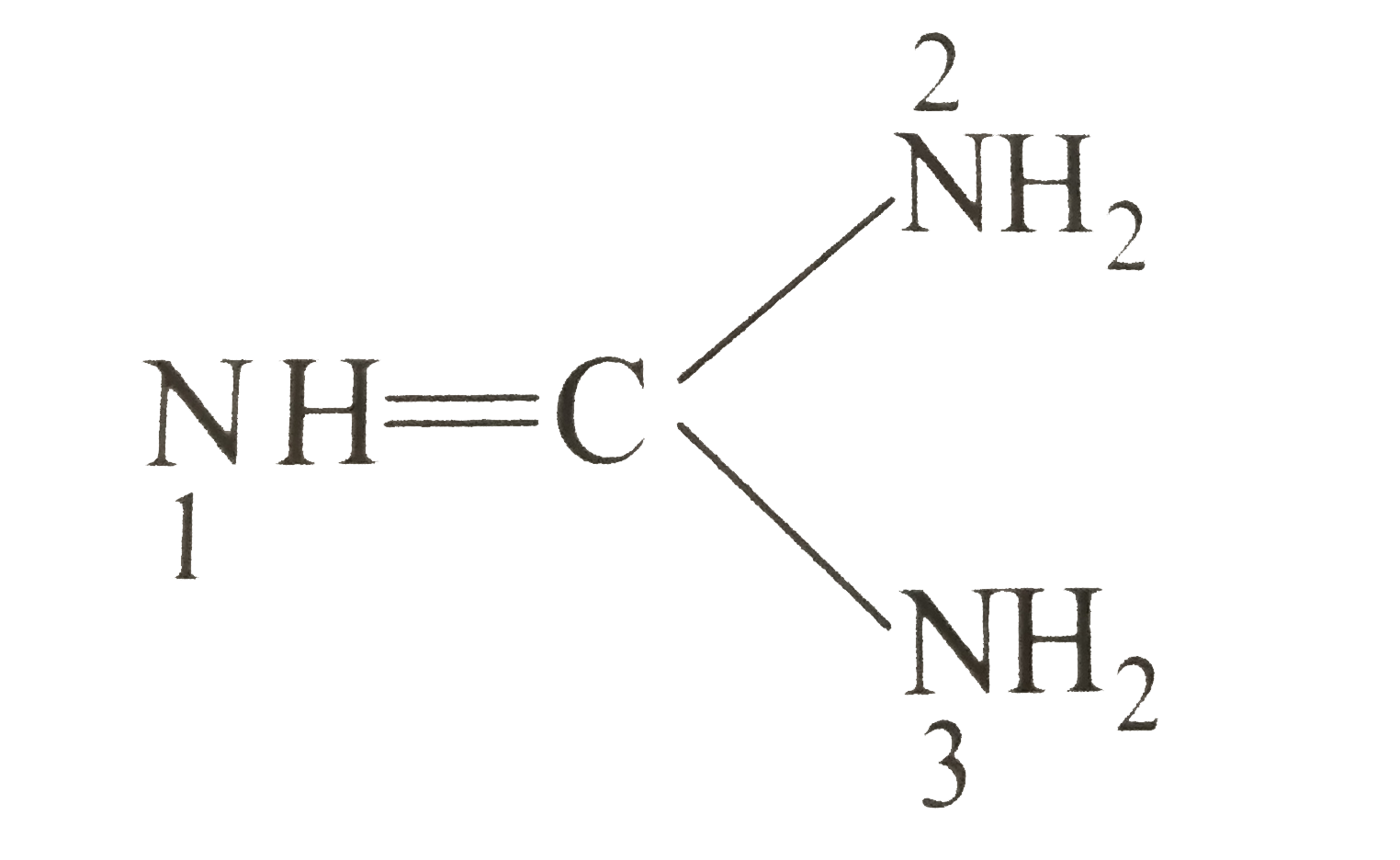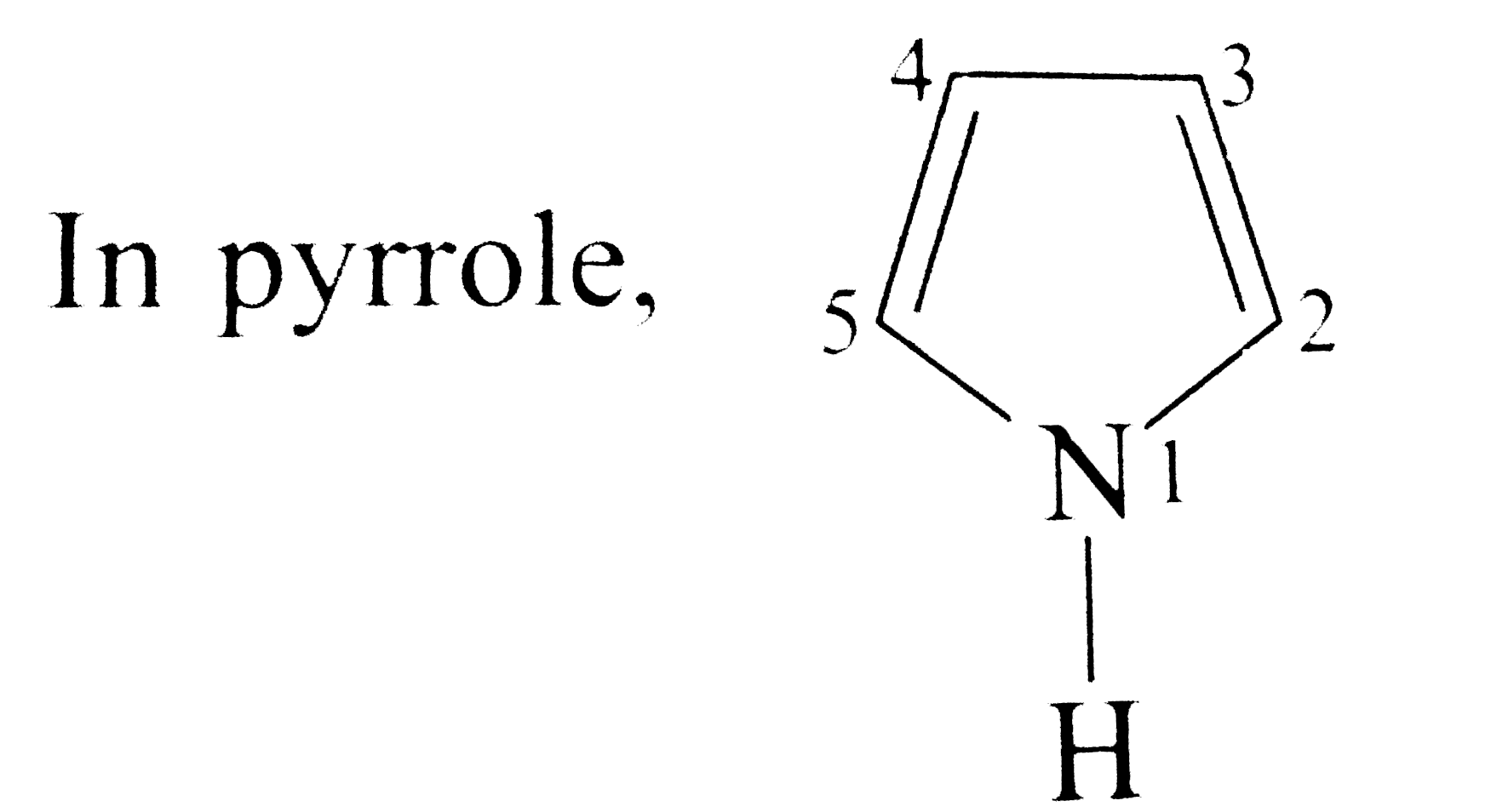Complete Solutions to OBJECTIVE QUESTIONS (Level-B) of chapter BASIC PRINCIPLES OF ORGANIC COMPOUNDS (MECHANISM OF ORGANIC REACTIONS) of Class 12 book with complete answers and questions
| Class 12 | CHEMISTRY |
| Chapter | BASIC PRINCIPLES OF ORGANIC COMPOUNDS (MECHANISM OF ORGANIC REACTIONS) |
| OP TANDON | OBJECTIVE QUESTIONS (Level-B) |
| Number Of Questions | 25 |
| Academic Year | 2023-24 |
Which of the following is incorrect?
View Solution Product (A) by the reaction is :
Product (A) by the reaction is :
View SolutionWhich nitrogen is protonated readily in the guanidine?

View Solution
Product of this reaction by single `(S_(E))` electrophilic substitution is :
View SolutionWhich of the following can undergo nucleophilic substitution under ordinary conditions?
I Allyl chloride
II Benzyl chloride
III n-Propyl chloride
IV Vinyl chloride
View SolutionElectrophile `NO_(2)^(+)` attacks on the following:

In which cases will `NO_(2)^(+)` be at meta-position?
View SolutionDehydrobromination `(-HBr)` of the following in increasing order will be :

View Solution
The above trasformation proceeds through:
View SolutionMaximum stability will be in which of the following free radicals?
View SolutionWhich of the following structures correspond to the product expected, when excess of `C_(6)H_(6)` reacts with `CH_(2)Cl_(2)` in presence of anhydrous `AlCl_(3)`?
View SolutionThe intermediate during the addition of `HCl` to propene in the presence of peroxide is :
View SolutionA covalently strated host group present in the benzene nucleus is ortho and para-directing, if unsaturated group is present, it is meta-directing. This rule is known as:
View SolutionSelect the incorrect statement among the following
View SolutionKharasch effect regarding addition of HBr is not observed in:
View SolutionAmong the following the aromatic compound is
View SolutionIdentify the correct order of reactivity in electrophilic substitution reactions of the following compounds:

View SolutionIn which of the following, first memeber is more stable than second?
View SolutionMost stable carbocation is:
View SolutionWhich of the following is least stable ?
View SolutionThe structure of Wheland intermediate obtained after the attack of `Br^(+)` on anilinium ion is:
View SolutionWhich of the following halides will be most reactive towards `S_(N^(2))` reaction?
View SolutionConjugation of electron withdrawing groups, e.g., `-CHO`,
`-overset(O)overset("|")C-R", "-overset(O)overset(||)C-OR", "-C-=N", "-NO_(2)` activates nucleophilic addition. The order of reactivity of these groups is:
View SolutionRelative stabilities of the following carbocations will be in the order:

View SolutionConsider the reaction :
`CH_(3)CH_(2)CH_(2)Br+NaCNrarrCH_(3)CH_(2)CH_(2)CN+NaBr`
This reaction will be the fastest in :
View SolutionIn pyrrole,

The electron density is maximum on :
View Solution
OBJECTIVE QUESTIONS (Level-B) questions and complete solutions for chapter BASIC PRINCIPLES OF ORGANIC COMPOUNDS (MECHANISM OF ORGANIC REACTIONS) of G.R. BATHLA & SONS CHEMISTRY (HINGLISH) of Class 12
All Exercises from OP TANDON Class 12 CHEMISTRY BASIC PRINCIPLES OF ORGANIC COMPOUNDS (MECHANISM OF ORGANIC REACTIONS)
- ASSERTION-REASON TYPE QUESTIONS
- BRAIN STORMING PROBLEMS
- ILLUSTRATIONS OF OBJECTIVE QUESTIONS
- MATRIX-MATCH TYPE QUESTIONS
- OBJECTIVE QUESTIONS (Level-A)
- OBJECTIVE QUESTIONS (Level-B)
- PASSAGE-I
- PASSAGE-II
- PASSAGE-III
- PASSAGE-IV
- PASSAGE-V
- PROBLEMS FOR PRACTICE
- SET II
- SINGLE INTEGER ANSWER TYPE QUESTIONS
- SOME SOLVED PROBLEMS